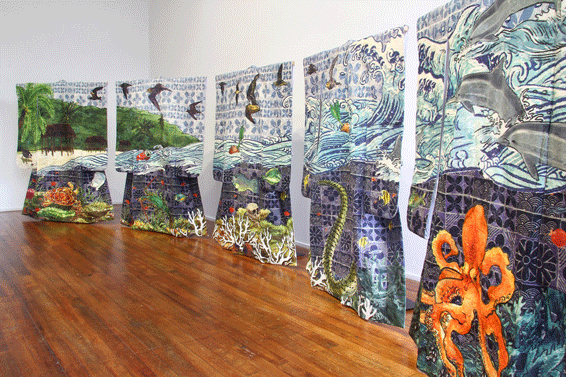Every culture has distinct traditions that allow them to stand apart from each other. Many artists are inspired by their own cultures and expressing themselves through those differences. Yuki Kihara pulls inspiration from both sides of her heritage across the Pacific, Sāmoa and Japan, to show what our oceans look like today.
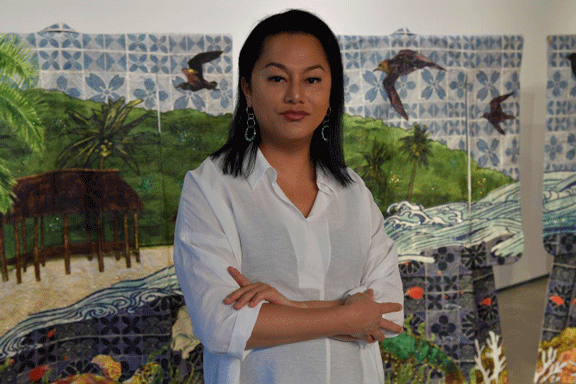
These two distinct cultures may share the Pacific Ocean with one another, but each island holds vastly different traditions. The traditions that Yuki Kihara decided to focus on for her piece, サ-モアのうた (Sāmoa no uta) or A Song About Sāmoa include both the clothing and the art style from both cultures.

Yuki Kihara’s サ-モアのうた (Sāmoa no uta) or A Song About Sāmoa focuses on the Japanese kimono and the Sāmoan siapo art style. The Japanese garment has roots as far back as the Heian period which began in 794 AD and was originally called a kosode. Over time the garment evolved, it wasn’t until the Meiji period, 1868-1912, that it began to be referred to as the name we know it today, a kimono.
The reason why the kimono is so quintessentially Japanese is because Japan had no outside influences until 1868. By using this garment, Kihara is, without a doubt, putting forward her Japanese roots and a key piece of the Japanese culture for the audience.
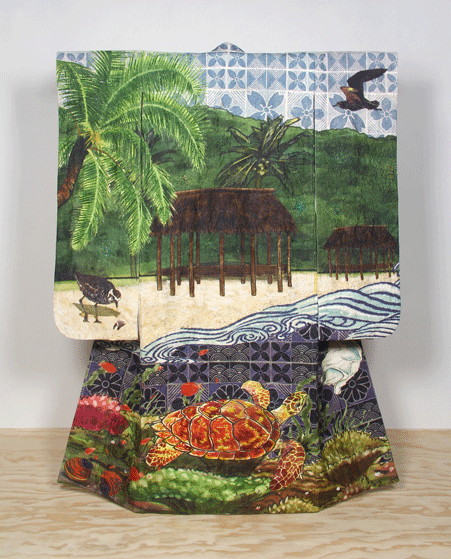
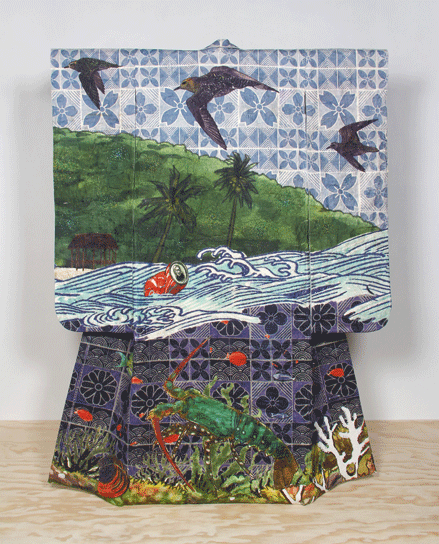
On the other hand, siapo is done on a linen called u’a and is made by the Sāmoan people out of the bark of the Paper Mulberry tree. The u’a is then adorned with patterns inspired by the environment in Sāmoa. This art form is one of the oldest in Sāmoan culture and continues to evolve, especially when it comes to Kihara’s art. It is in the siapo patterning that Kihara also incorporates the seigaiha pattern, a half circular pattern that dates back to 6th century Japan.
By understanding these two important traditions from her heritage, Yuki Kihara merged the two together in order to create サ-モアのうた (Sāmoa no uta) or A Song About Sāmoa. An installation that features five kimonos made of the u’a linen and adorned with the siapo style to depict a cohesive scene of the sea, or vasa as it is known in Sāmoan and referred to by the artist.
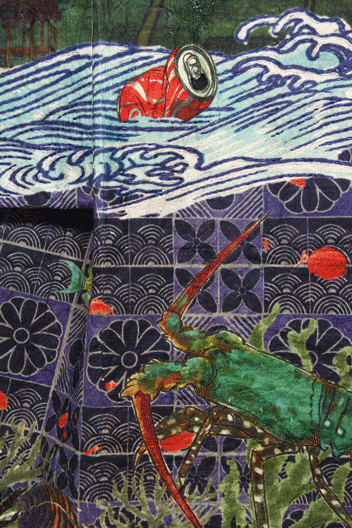
The siapo patterning of the kimonos are juxtaposed by the seigaiha, and nihonga, or Japanese paint style that Kihara used in order to create the ocean scene. There is also a textured quality to each piece as Kihara utilized embroidery and beading to bring each detail further forward.
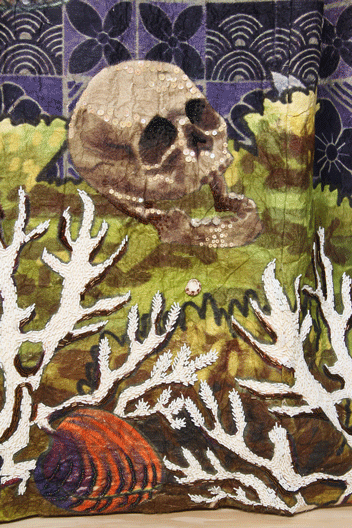
The scene and the installation itself are a representation of the Pacific Ocean where both Japan and Sāmoa can be found. But a deeper look into the details reveals much more about the intentions behind it. While Kihara is inspired by her heritage, she also represented the United Nations Sustainable Development Goal (SDG) on Life Below Water and Climate Action through the depiction of plastic bags and soda cans littered among the scene. She also places a human skull at the ocean floor perhaps to show that human beings may litter profusely, but in the end they all return to the Earth.
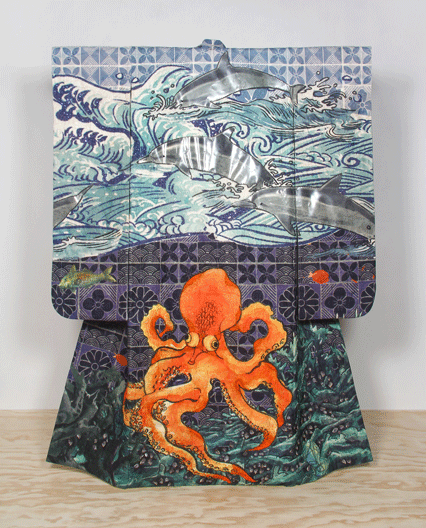
Yuki Kihara has several projects coming up in the near future including an exhibition in France’s Musee Maritime de La Rochelle running until October 31st, 2021. Her work can also be found in The Netherlands, Museum Volkenkunde through 2022 and a group exhibition in the Christchurch Art Gallery found in Aotearoa New Zealand through April 2022.
More about Yuki Kihara’s upcoming events can be found on her artist page here.
